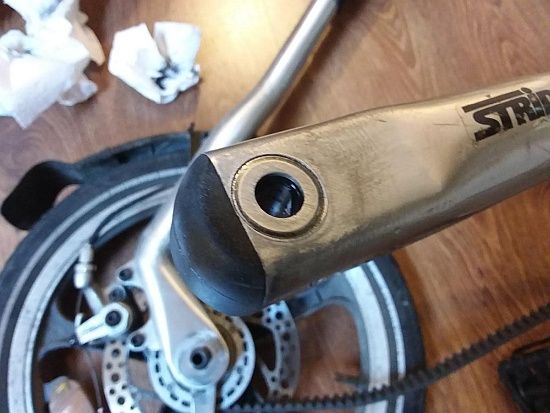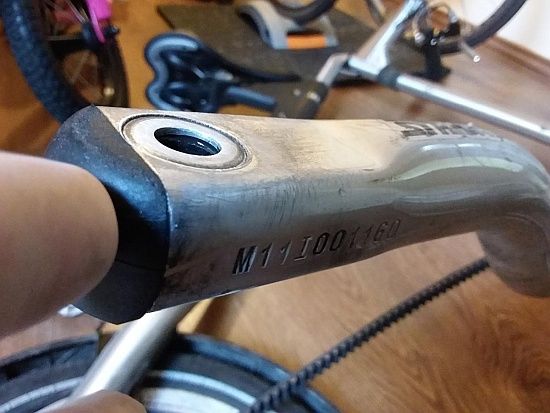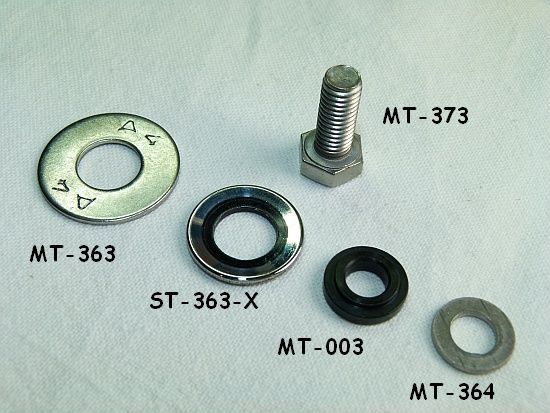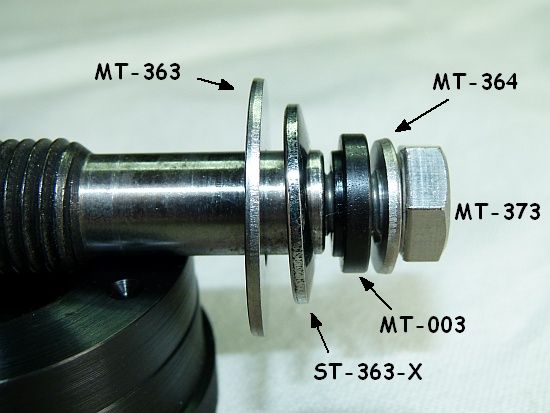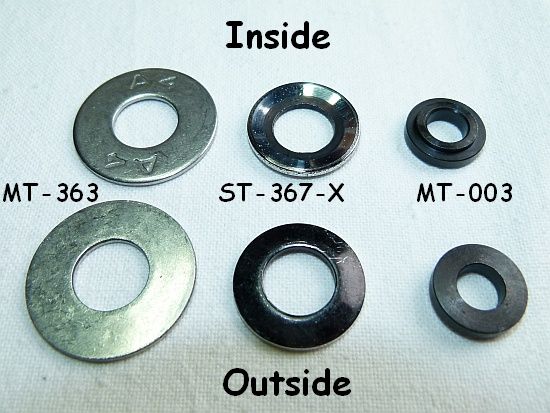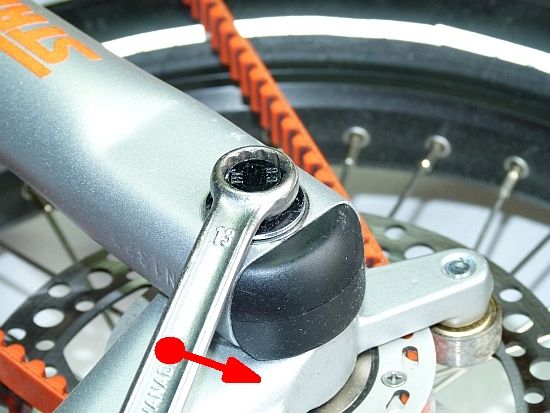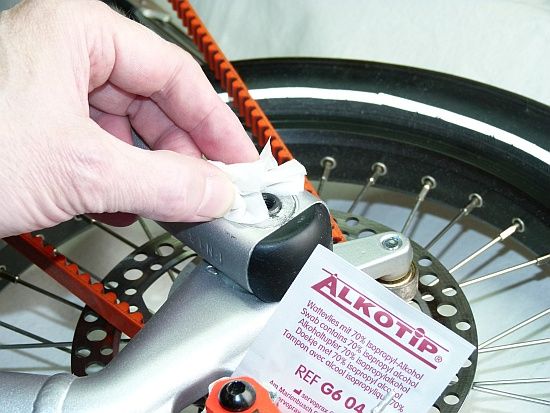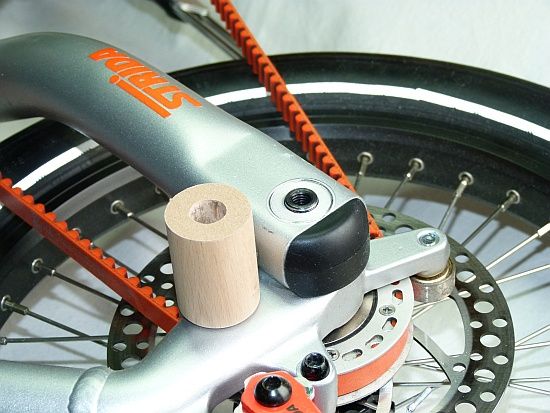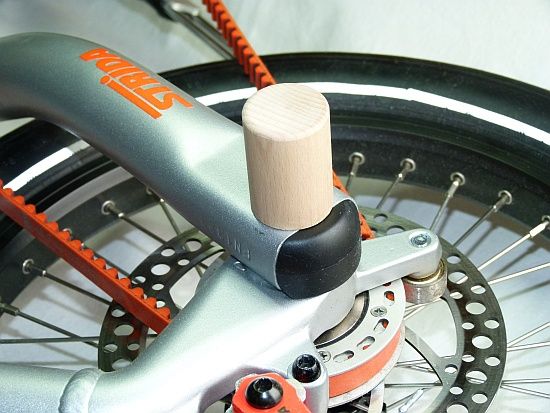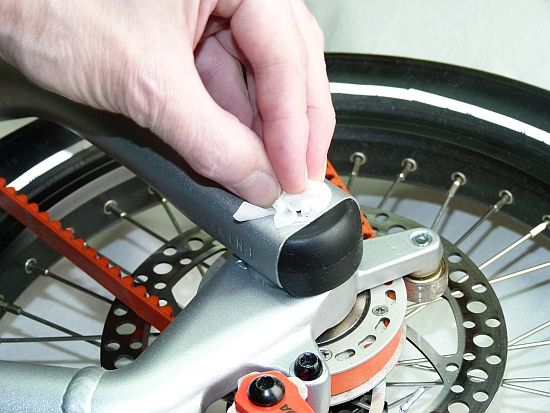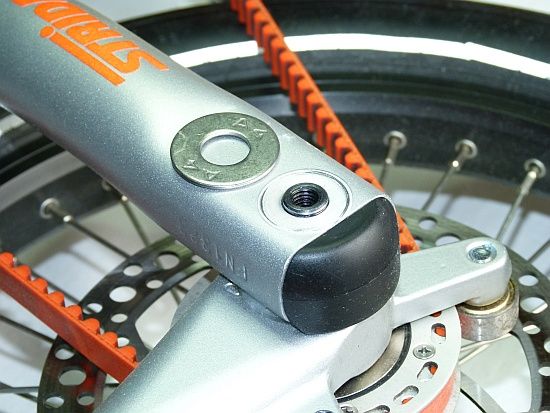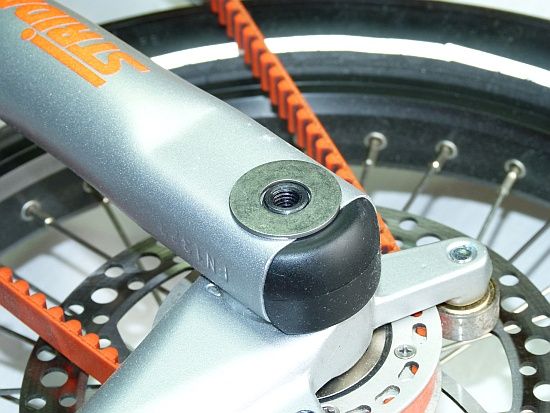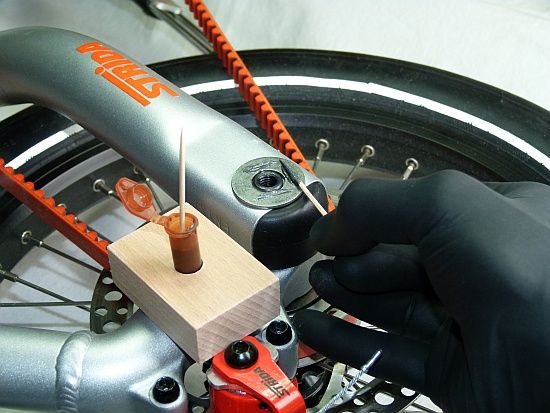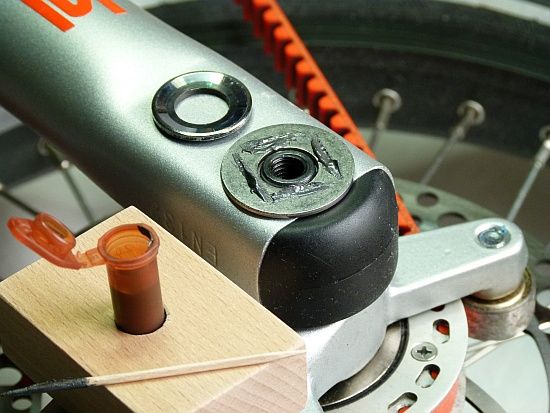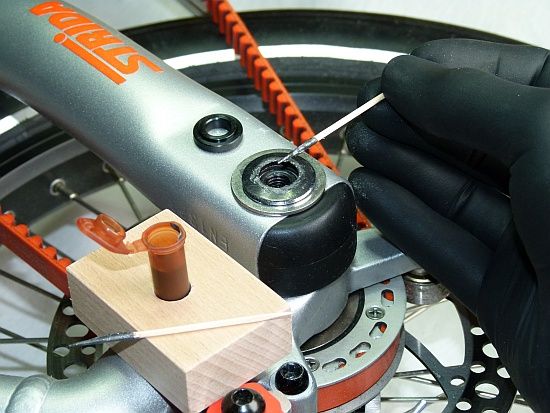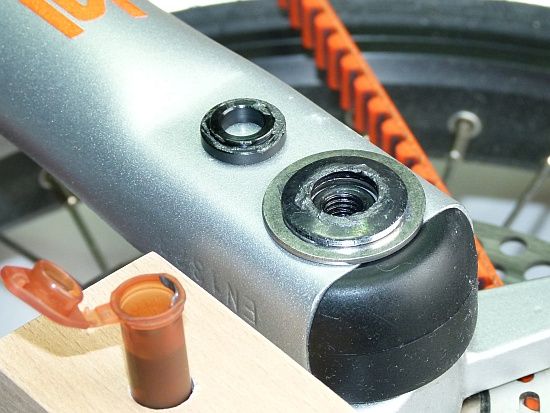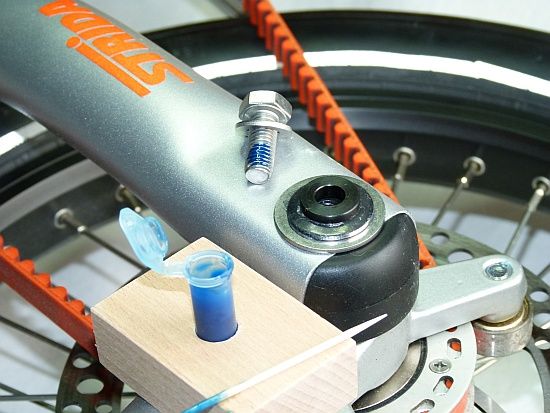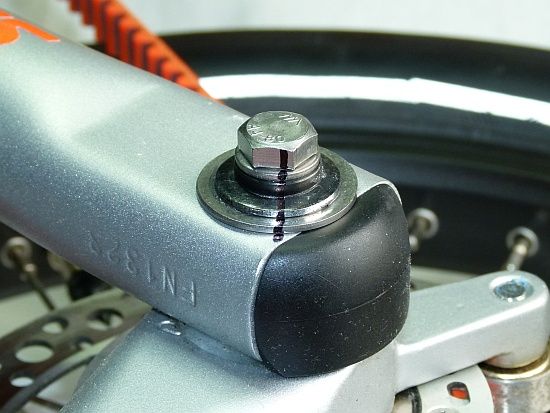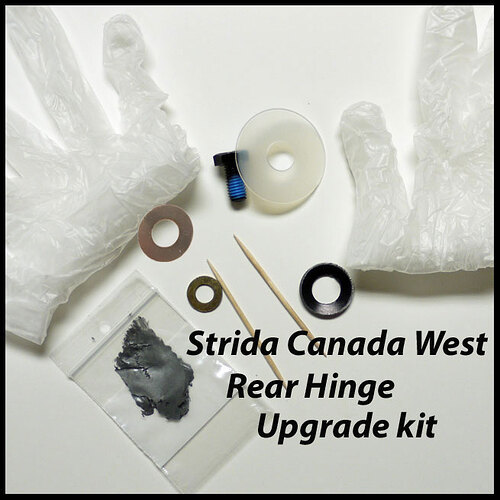Dear MRoe,
many thanks for your feedback.
I don’t like to simply give up - let’s try to sort that out again.
Back to the cup spring and its dimensions, first some facts which can be checked easy at your own bike/parts.
- The cup spring has an - unloaded - height of ~ 3,0 mm.
- Material thickness of the cup spring is ~ 1,6 mm.
- The axle stump does protrude ~ 2,3 mm above the frame.
That means in original condition will the spring be compressed for ~ 0,7 mm.
In other words; the height of the spring will be reduced from 3,0 mm down to 2,3 mm - more or less is impossible with a tight bolt.
Logical fact.
(This 0,7 mm are important, they give us an indication for the originally intended preload of the spring.)
Also it is just logical that a cup springs height can not be lower than its material thickness - a physical impossibility.
So - and what are you doing?
First you raise the cup spring’s height dramatically (by using an underlayer) for 1,5 mm - that means your cup spring is now (unloaded) ~ 4,5 mm high.
And then you compress it down to the axle stump (which has 2,3 mm length) which means (4,5 - 2,3) in sum for 2,2 mm!
We want to achieve about the same preload of the spring like that of a new bike.
And you want to load it for 2,2 mm instead of 0,7 mm 
Oh mate - that will never work!
Look at the facts above - it is totally impossible to compress the spring more than its actual thickness - but you want to do exactly that!
Your spring has now absolute minimum thickness of 3,1 mm (yes, the underlayer has to be count in here!) and your bolt will never sit correctly - it can’t because the bolt’s underside doesn’t reach the end of the axle stump, there will always be a gap of about 0,8 mm (3,1 - 2,3).
Moreover that you overtighten the cup spring - which you can see at the deformed stainless washer on top, too.
The deformed washer is obviously the weakest link of the chain - it wants to crawl into the gap to flee from the enormous pressure between spring below and bolts head on top.
You have just one chance to correct this - you MUST elongate the axle stump!
And this is what the recessed part of the recessed washer does - it makes the axle “longer” to compensate the armour shim (the underlayer).
The depth of the recessment has to be equal to the armour shims thickness - ONLY that way it is possible to generate the correct preload of the spring.
Please let go the idea that the bolt 373 could be intended to be loose - that is certainly not the case. 18 Nm torque are tight, but 0,18 Nm and 180 Nm are also tight - and not loose.
Your torque key may click at 18 Nm “correctly” but not because it recognizes the common expected bolt-thread connection - instead it is the immensely raising tension of a nearby flattened out cup spring which forces it to release!
![]()
![]()
